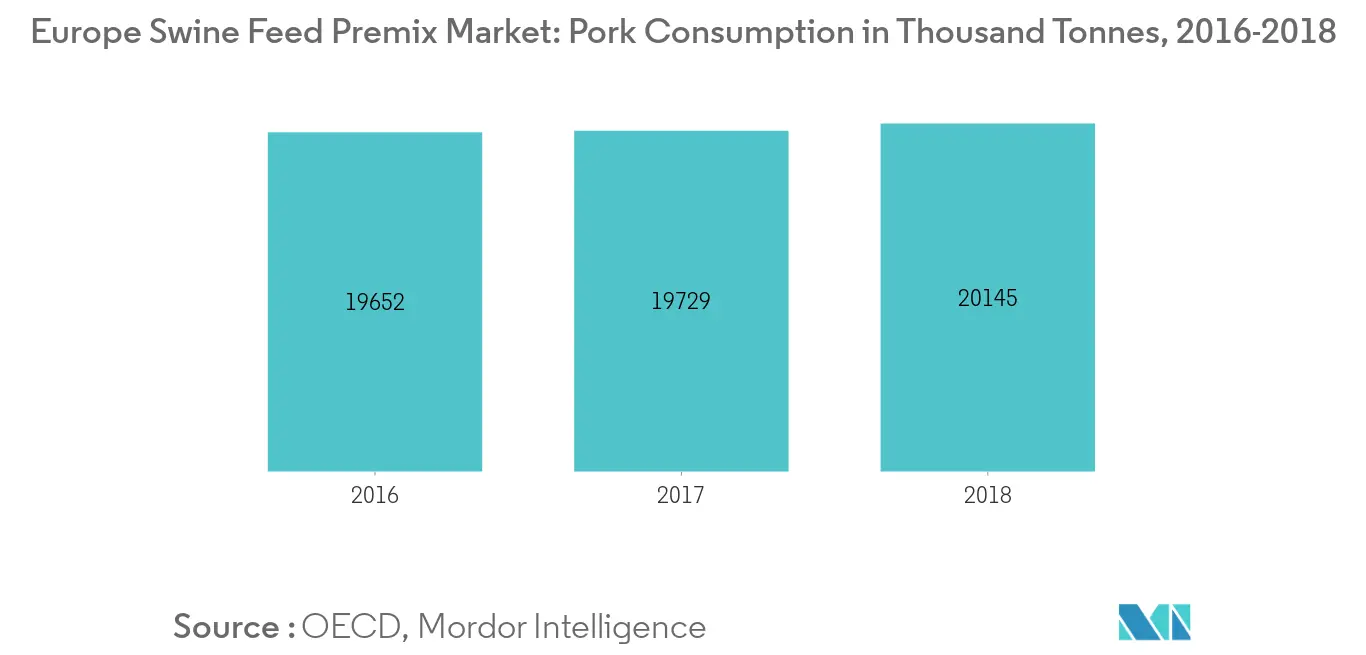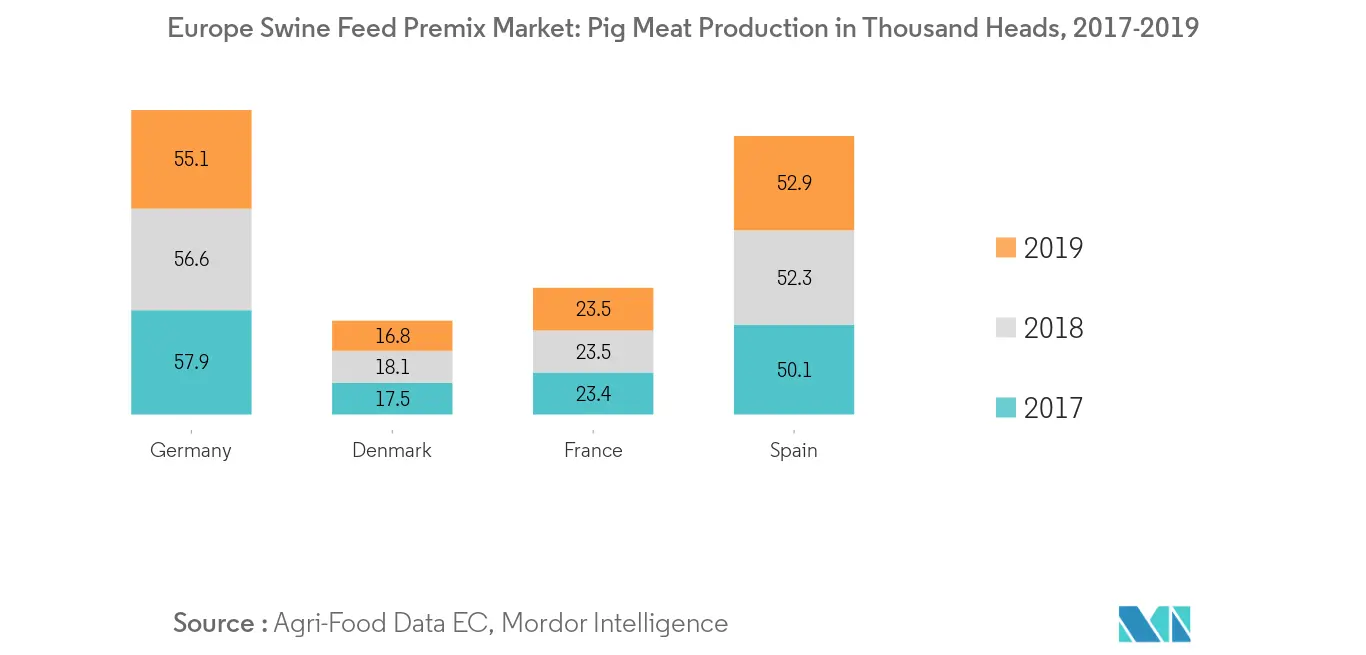Market Trends of Europe Swine Feed Premix Industry
This section covers the major market trends shaping the Europe Swine Feed Premix Market according to our research experts:
Increased Consumption of Pork
According to the Organization for Economic Co-operation and Development (OECD) along with the United States Department of Agriculture (USDA), the pork consumption in Europe has significantly increased from 19652 thousand tonnes in 2016 to 20145 thousand tonnes in 2018. According to the studies, it is also seen that the domestic consumption of pork in the region tends to decrease while the export of pork from the European Union shows steady growth due to the increasing demand from the Chinese market. To avoid cut in profits and reduce raw material costs the farmers add premixes as it enhances the quality of meat and ensures a high price. The increasing rate of pork consumption along with the cost factor of raw material in the region is expected to drive the feed premix market.

Germany is Dominating the Market
According to the Agriculture and Horticulture Development Board (AHDB), Germany is the largest European Union producer, trader, and consumer of pig meat in the region that supplies approximately 12% of the United Kingdom Pig meat consumption. Due to the Covid-19 outbreak in the region, the weekly slaughter estimates were 6% below compared to 2018. After Germany, Denmark is the net exporter of pig meat to the United Kingdom accounting for 14% of the countries consumption. The growth of this industry is dependent on certain broad aspects such as increasing demand for swine meat, innovation impetus from increasing regulations, and the overall increase of the feed premixes market. The disease outbreaks that have occurred have forced manufacturers to use premixes to ensure quality and safety. Given that the development of the premixes is mainly to address specific nutritional needs and inherent genetic potential of the animals, the mounting governmental regulations are pushing the industry to better accommodate feed premixes in their manufacturing processes. The rising technological advancements in meat production and amplified pricing range are expected to help sustain the raw material costs.


